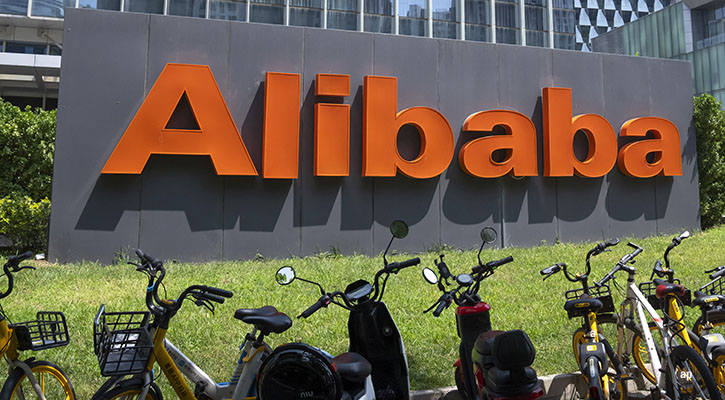With the European sovereign debt crisis dominating the headlines and many European banks trading near half of tangible book value, many value investors are drooling over the potential for bargain hunting. While many European banks' regulatory capital ratios look fine--most are near or above the new market-imposed 10% target--this disguises wide variation among firms, in our opinion. As we illustrate below, other measures show that many European banks are undercapitalised and have poor funding relative to U.S. banks. These banks may need to raise new capital not only in the near term as they prepare for write-downs on sovereign debt, but also in the long-term as investors become more conscious of the importance of investing in banks with sturdy capital bases. These capital raises are likely to be highly dilutive for current shareholders. We caution investors to beware of the value traps that may lie among Europe's many undercapitalised banks, and stick to the high ground of the best-capitalised, most liquid banks--namely, HSBC (HSBA), Standard Chartered (STAN), and Julius Baer (BAER).
Hunting for Well-Capitalised Banks
With nearly all banks reporting adequate regulatory capital ratios, it can be difficult for general investors to distinguish between the best- and worst-capitalised banks. This chart (opens in new browser window) shows the core Tier 1 capital ratios of the major European banks, along with those of the top four U.S. banks. Core Tier 1 capital has largely replaced Tier 1 capital as the market's favourite gauge of banks' capital. Core Tier 1 capital measures the ratio of equity capital excluding preferred equity (and other types of debt-equity hybrids) to risk-weighted assets. As you can see, banks almost uniformly nearly meet or exceed the market-imposed 10% target and seem broadly comparable to U.S. banks. A couple, like Julius Baer and UBS (UBSN) stand out as having capital well above the 10% level, but none stand out as having too little.
However, we think this disguises the true variation in banks' capital, as shown on this second chart. Importantly, the regulatory measure of capital, as shown on the first chart, has "risk-weighted assets" in the denominator, while the figures in the second chart are simpler, adjusted only to net derivatives, as is standard under U.S. accounting rules. In many ways, risk weighting makes sense. Clearly, it is important for a bank to hold more capital against, for example, a delinquent credit card loan than a short-term U.S. treasury bond, as the bank is much more likely to experience losses on the credit card loan. Risk-weighted assets are a logical way of dealing with this; riskier assets are given higher weights, and some assets that are perceived to be without risk are given 0% weights.
There are two problems with this. First, as with any rules-based system, the rules can be right in the abstract but wrong in individual cases. RWA calculations depend in large part on bond ratings, and we've seen a lot of examples recently where bond ratings turned out to be wildly inaccurate. For example, Irish and Spanish sovereign debts were rated AAA in early 2009, and were therefore weighted at 0% in banks' RWA calculations. While both countries may manage to avoid defaulting, we think the probability of their doing so is not 100%, and is perhaps closer to 80%-90%. In addition, European banks use Basel II rules to calculate their capital ratios, while U.S. banks use Basel I rules. Basel II rules give banks more leeway to evaluate their assets' riskiness using internal models. Broadly speaking, these internal models argue that assets are less risky than Basel I rules assert, but we're unconvinced that these internal models are able to incorporate the risk of a worse outcome than seen in the short history of modern finance.
Therefore, instead of relying solely on regulatory ratios, we like to calculate a bank's ratio of tangible common equity (the highest-quality type of capital) to unweighted tangible assets, adjusted only to net derivatives. As the chart shows, this number is much more variable. Dexia (DEXB) stands out as having far too little capital, in our opinion, but Credit Agricole (ACA) isn't far behind. Credit Suisse (CSGN) and Deutsche Bank (DBK) also look light on capital. While they are generally good operators, so perhaps large losses are unlikely, this chart shows that they have relatively little ability to shake off negative surprises. On the other hand, HSBC, Standard Chartered, and Julius Baer all have capital well above the 4%-5% level we see as necessary, and they show levels comparable to those of U.S. banks.
Deposit Funding is a Scarce Commodity
We're also concerned that European banks remain too dependent on wholesale funding. The best banks, in our opinion, are largely deposit funded. We like deposit funding both because it is cheap--banks can pay their customers very little for deposits--and generally "sticky"--customers are loathe to change their bank accounts unless they really have to.
Wholesale funding, on the other hand, is expensive and fickle. European banks' net interest margins are suffering as they pay up for wholesale funding, and we've seen many examples in recent months of banks losing access to the wholesale funding market as rumours about banks' solvency fly. For example, European banks have been almost completely cut off of U.S. money market funding, which was an important source of dollar funding for many European banks, like Societe Generale (GLE).
The third chart measures what percentage of a bank's loans are funded by deposits. We prefer to see numbers around 100% or a little lower, and lower is generally safer. We're deeply concerned about the Italian banks' relative lack of deposit funding, but we're also not happy with Lloyds Banking Group's (LLOY) results, given the bank's retail-oriented business model. It's largely a legacy of its HBOS takeover, and while Lloyds has at least transformed most of HBOS's short-term wholesale funding into long-term, it remains a serious problem with the bank's business model. To be fair, we note that all of the banks shown here with ratios above 100% are trying to attract more deposits, but we're concerned that the competition for deposits may turn out to be a zero-sum game. Banks will end up paying more, but together can increase the total pool of deposits only marginally. Banks that are unable to attract enough will have to leave themselves open to suddenly being cut off from funding markets--or shrink. We're glad to see, however, that some banks already have solid bases of deposit funding comparable to those of U.S. banks, and that HSBC, Standard Chartered, and Julius Baer are among them.
We caution investors to avoid undercapitalised European banks. We expect that many will need to be recapitalised in the coming months, whether by shareholders or by governments, and that the recapitalisations are almost certain to be highly dilutive given recent trading prices. We note that during the subprime crisis, many rights offerings took place at near 65% of the market price on the day of the announcement. However, we also think that the downward pressure on European bank share prices has created opportunities for long-term investors. HSBC, Standard Chartered, and Julius Baer all have very different business models, but they all share capital and liquidity strength that is rare among their European bank peers.
























